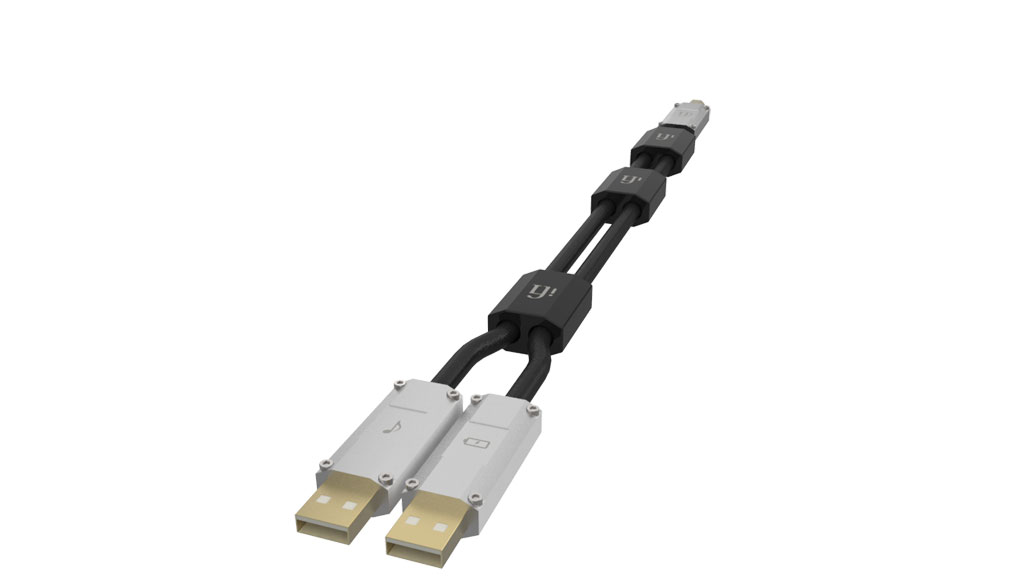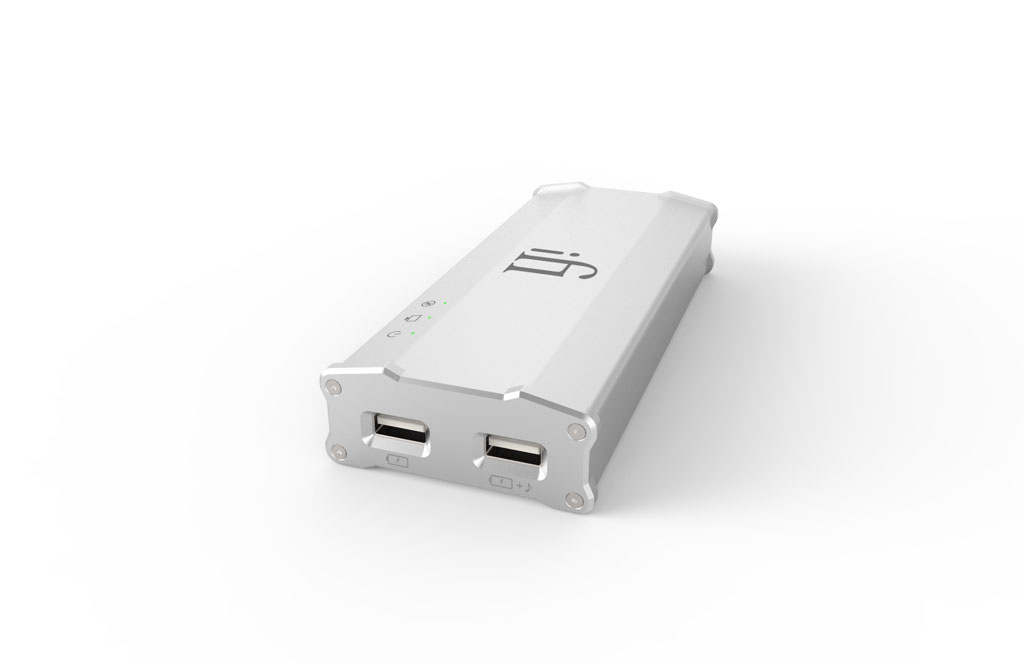Mercury USB cable vs Monster USB 2.0 cable
I have been using a Monster USB 2.0 cable for playing my computer music files, and not being a Luddite but one with an open mind, I was still doubtful there was much difference in sound quality with the various available USB cables. When I compared the two cables, however, I did hear differences for the better when using the Mercury. The Monster cable emphasized the treble region and as a result, sibilance was more pronounced and the general sound was brighter. On the other hand, the Mercury presented more prominent bass frequencies, which provided a firmer foundation in that area. These two differences were especially discernible when listening with headphones.
iDAC headphone output
I’ve already stated in several past reviews that I am not a serious headphone user, but do use my Sony MDR 7506 monitor headphones occasionally for late night listening, mainly to not disturb neighbors and to sometimes fall asleep. When I use headphones, however, I listen critically and found the headphone amp with this component to be an extremely capable performer, even competing well against the more expensive Teac UD-501 DSD DAC (review forthcoming) and the headphone section of my reference Rogue Audio 99 Super Magnum preamplifier.
Tonal balance is generally spot-on and harmonics are textually accurate. For example, the interplay between the piano and organ is sumptuous and vibrant sounding in the Missy Higgins song, “The River” on her The Sound of White album. This is a sad song about a young girl committing suicide by throwing herself into the river, and the iDAC does a masterful job of presenting Missy Higgins’ emotional turmoil through her plaintive voice.
On “Set Things Aright” Daniel Martin Moore’s vocals are distinctly separate from backup singer Haley Bonar’s harmonies, a feat which is not accomplished sometimes with some components when I listen through loudspeakers, the result of which is a merging of the two voices.
Rhythmic pacing is also superb. To illustrate, listen to the counterpoint between the mandolin and guitar on the Keith Greeninger and Dayan Kai cover of the Grateful Dead song “Friend of the Devil.” It is easy to follow the melodies of each instrument as they play off each other.
The headphone amp section of the iDAC alone is worth the asking price, and when one factors in the actual DAC, the component becomes an excellent value.
Mercury USB cable + iPurifier – $99 + iUSBPower – $199 + Gemini USB cable – $179 for 0.7 meter, $249 for 1.4 meter + iDAC
The company’s website recommends combining all three: “iUSBPower (to supply pure, clean power), Gemini cable (for separate audio + power transmission), and iPurifier (to filter audio + power) just prior to entering the DAC” to achieve “the quietest and smoothest music playback from computer audio.” All right, I’ll bite. Who doesn’t want maximum mojo with their music? Here we go, all aboard for the iFi/Lego choo-choo train.
For those unaware, Universal Serial Bus (USB) was developed in the mid-1990s as standard protocol for connection of peripheral devices-such as printers and digital cameras-to PCs. USB basically has three functions: connection, communication and power supply. In this regard, high quality audio transmission is not a priority with USB since all three functions were initially designed and implemented to operate in one cable. As a result, several factors could negatively influence sound quality with this all-in-one approach: electromagnetic interference, inherently high PC noise, and jitter.
The Gemini goes one step further than the Mercury cable in that it separates communication (audio) from the power into two distinct cables. IFi-audio doesn’t think sharing communication and power is a good thing when it comes to audio. They also think that PCs are inherently noisy, so the iUSBPower supply was developed to really quiet noise. This external PS effectively does away with a PC’s internal power, by replacing it with its own 9 volt wall-wart (5 volt output). The same warning not to replace the supplied wall-wart with some other manufacturer’s unit applies to the iUSBPower as it does with the iTube. The iUSBPower also has an IsoEarth switch, which is designed to break ground loops and also provide additional filtering. The iPurifier is supposed to restore the signal waveform by “cleaning and filtering the audio and power,” resulting in a smoother sound. I don’t have the foggiest clue how this device works, so please don’t ask me.
Accessories include: short USB cable (iUSBPower), USB to DC cable, to power a Logitech Squeezebox for example (iUSBPower), four stick-on feet (iUSBPower), mini USB adaptor (iPurifier, Gemini), felt bag (Gemini), and information/warranty card (all three).
- ← Previous page
- (Page 2 of 3)
- Next page →



Interesting concept with the power split also the fact that other current Dacs are mentioned this unit seems like a easy budget winner………
They are amazingly good for the price. They would make good entry level or desktop systems, or even main components for people on a budget.
I am using the iUSB Power, the iDSD dac, and the iPurifier for my desktop system. Connected to them is an Audioengine N22 amp and Mirage OMD-5 speakers, USB cords are Pangea AG’s and interconnects are AQ Colorado. I am running JRiver Media Center 19 on my Windows 7 pc. I play the music while using the computer for all my normal tasks (it’s playing now). I don’t experience any drop-outs and few extraneous noises.
The sound of this combination is delicious – deep and wide soundstage with an overall warm, inviting sound. I was running ASIO until I read your review, now I am trying WASAPI and so far like it better (richer timbres).
My main system uses an Auralic-Vega dac and sounds excellent – but this iFi combo is not embarrassed by the comparison. Both systems use the same NAS for music storage.
The fact that it handles DSD as well as hi-rez PCM is important to me. Computer audio is becoming easier and more essential every day. The iFi components are a very satisfying entry point as well as a final destination.
Hi Gary,
You put together a very nice desktop system, congrats. Are you using the nano iDSD or the new micro iDSD? If you are using the latter, my colleague Doug Schroeder is auditioning it now, so look for his review when it’s online. If the former, Part 3 of my iFi-audio review focuses on the nano iDSD, and should be online in a few days. If you desire even richer harmonics, see if you can borrow an iTube which I cover in Part 1, the 3D holographic feature is a hoot for a desktop system. Computer audio is becoming essential for me also, especially with hi-res music files being easier to obtain and thus becoming more common.
Cheers,
Paul
enjoyed the review and history of company. I might want to invest in a entry level DSD DAC such as the IFI .
Hi Tom,
It’s the cheapest way to find out if DSD is to your liking.
Paul
Thanks, Paul, for the extended review.
I concur with your iDAC results, but using just the iDAC alone, without the Mercury cable or iUSBPower unit. Working with blu-ray format and Windows 7 foobar and ASUS Xonar Essence STX soundcard, I found that (L)PCM sounded clean, transparent and surprisingly natural.
Novices, the hi-end curious, hobbyists and assorted sonic thrill-seekers can take comfort that hi-end is not just for the well-heeled. I very much appreciate your efforts, Paul, in bringing news of good-valued, hi-end sound to most of the audiophile faithful, who lack large, disposable bank accounts. There seems to be a slight imbalance with much industry attention being paid to gear with stratospheric prices, and your reviews help to redress this imbalance. After all, for most of us, this hi-end thing began as a hobby.
Also, I eagerly look forward to examining DSD sound, when I am able.
Thanks Jason, for the compliment. Once you have had a taste of DSD, you may never go back. Lol.
Cheers,
Paul